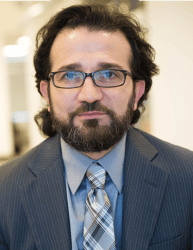This commentary is the third of a three-part series on (1) why it is important to define the purpose of education, (2) how historical forces have interacted to shape the purposes of today’s modern schooling systems, and (3) the role of power in reshaping how the purpose of school is taken up by global education actors in policy and practice.
The recent United Nations General Assembly (UNGA) meetings in New York were a chance for the global education community to revisit, one year later, the debates that took place at the Transforming Education Summit (TES) during UNGA 2022. Many of the 2023 discussions covered the same ground as last year, such as the need for deep transformation to help education systems respond to complex crises—for example, rising economic inequality, growing authoritarianism, pandemics, climate change, human conflicts, racial and gender oppression, and misinformation. But there were also new themes that emerged more strongly this year. For example, generative AI was added to the list of forces the SDGs have to consider (Chat GPT3 was released in November 2022, two months after TES). There was also an increased focus on centering the agency of actors in and from the communities where transformation is taking place. This focus on agency arose frequently—from convenings like 17 Rooms, which brings together actors across government, civil society, and the private sector, to remarks by the UN Leaders. Across many UNGA discussions, the need for new approaches that prioritize the agency of community-based actors—from families to educators to young people—was a recurring theme.The major achievement of the UNGA deliberations was that countries around the world agreed to keep the UN Sustainable Development Goals (SDGs) as orienting aims rather than, halfway in, abandoning them altogether in the face of headwinds from pandemics, wars, and inflation. Amina Mohammed, the UN Deputy Secretary General, at an education event hosted by Their World, tried to strike a positive note, saying that “games are won in the second half.” But she was clear that the playbook to achieve the SDGs in the seven years left would require “all hands on deck,” and she called on communities around the globe to exert their agency and tell their leaders that “we are not waiting for you.”
To truly make space for communities around the globe to take part in collective decisionmaking in the pursuit of the SDGs, which includes advancing education system transformation, we must collectively address the topic of power. Last year, in connection with TES, the Brookings Center for Universal Education (CUE) co-authored a range of pieces on transforming education systems. In “Transforming Education Systems: Why, What and How,” which we co-authored with the Ministry of Basic and Senior Secondary Education of Sierra Leone, we suggested a framework for three main steps that were needed to advance system transformation as distinct from making incremental improvements within systems. Step one, Purpose, is developing a shared vision of the purpose of education across students, communities, educators, and leaders. Step two, Pedagogy, is (re)designing the pedagogical core—namely, the interactions between learners, educators, content, and resources—to deliver on the shared purpose. Step 3, Position, is to align the system components to support the pedagogical core (re)design. We called this the 3Ps of system transformation.
We argue in this blog that the 3Ps model should be expanded to include a fourth P: Power. Transformation efforts cannot be truly inclusive and equitable without naming and understanding the underlying power dynamics. In a follow-up analysis to our 3Ps model, “Shared priorities to transform education systems: Mapping recovery and transformation agendas,” we found different priorities related to transforming education between global actors—such as UN organizations and multilateral funders—and actors inside education systems, such as students, families, educators, and governments. The voices inside the system were twice as likely to prioritize discussions of “purpose and power,” namely, who is at the table when it comes to discussing what education is for and what type of transformed education system we want to enact as a global community. Actors inside the system were identifying a need to shift power to include a more diverse set of voices and to make space for the bottom-up leadership of local actors.
The importance of interrogating current power dynamics was also a recurring discussion during this year at our “Education Systems Transformation Symposium,” where participants argued to expand the 3Ps model to include power. Discussions of power in systems transformation is by no means a new topic; it is well debated in many spaces and more recently included as part of global education advocacy and policy discussions, including in the recent piece titled “The new education story: Three drivers to transform education systems.”
The time has come for us to address power dynamics in education systems transformation. To do so, we need to define the different forms of power and how they manifest in practice.
Considering the five forms of power in discussions on system transformation
Power dynamics are multidimensional and omnipresent in education systems, in research, and in the field of global development. They materialize and manifest in different forms and to different ends, but at the core of power is the capacity to influence or direct actions, behaviors, and decisions. One framework for understanding power as it relates to decisionmaking in education systems planning and transformation is Dr. José Cossa’s “Five Qualities of Power.” Dr. Cossa’s framework identifies the different intersecting forms of power as regulatory, financial, manipulative, informational, and interpretive. We argue that understanding power in its different forms can help the global education community advance its efforts to address power dynamics in decisionmaking around the process of system transformation. It can also help us see beyond the regulatory and financial forms of power, which are the most frequently analyzed and considered.
The below table summarizes Cossa’s five forms of power and provides examples education systems contend with, ranging from technology to funding relationships to government decisionmaking to what counts as information and evidence.
| Types of power | Definition | Example |
|---|---|---|
| Regulatory | The decisions behind how laws, rules, or agreements—such as conventions, referendums, contracts, and other binding documents—are made and enforced. At the national level this includes country education laws and policies, and at the international level this encompasses transnational policies and regulations. | Entities developing AI content are concentrated in a few countries, such as the United States, but users are located worldwide. Who regulates data privacy(1) and standards of ethics becomes an important conversation, as well as whether national and international laws are sufficient to protect the rights of users. Many AI tools “are rapidly emerging, and the release of iterative versions is outpacing the adaptation of national regulatory frameworks.”(2) |
| Financial | The direct and indirect exchanges of monetary and other resources—such as foreign aid, contracts, grants, and donations—as well as budgets and fiscal control measures. | Funders, be they governmental, multilateral, philanthropic, corporate, or individual, wield financial power. The entities they are funding rely on their support to achieve progress toward particular outcomes. |
| Manipulative | The ability to persuade people’s beliefs and behaviors towards the persuader, such as using financial power to influence country governments to take a particular stance or adopt a particular policy. This persuasion could be for positive, negative, or neutral purposes, but the ability to influence viewpoints is a form of power. | The power of algorithms used by social media entities to personalize and tailor information to a user, even when information may not be verified or factual. |
| Informational | The ability to create, gatekeep, and control information that is perceived as valuable or true—such as research, textbooks, curricula, and teacher training content—as well as misinformation and propaganda. | This power is exercised by entities such as editorial boards of academic journals who choose what research is or is not shared and governments censoring media or discussion of certain topics. This also includes the sources the information is drawn from and used in AI and other platforms—which are biased towards certain languages like English. |
| Interpretive (also called Hermeneutical) | The power to understand, author, and interpret what is said, such as interpretation of agreements or ability to comprehend and apply research. | The power that institutions, such as the UN, research institutions, and policy institutes, wield as they frame debates and discussion, put forth narratives or interpretations of data and information. (Note: We consider ourselves, CUE at Brookings, as having primarily interpretive power). |
There are many power dynamics at play as we confront new challenges and opportunities in our sub-national, national, regional, and global education transformation efforts. Analyzing the five forms of power helps us examine how these influence decisions about how to advance systems transformation and what might need to change to support an “all hands on deck” approach. If we are to make space, as the UN Deputy Secretary General has advocated, for communities to have more power to advance the SDGs, understanding the different dimensions of power will be an important first step.
At CUE, we are working closely with our partners from across the world to think deeply about what power means and how it fits into system transformation. As we add a fourth P, Power, to our 3P framework, we will work to be more intentional in acknowledging and disrupting existing power hierarchies in our work.
Endnotes
1: https://www.brookings.edu/articles/a-comprehensive-and-distributed-approach-to-ai-regulation/
2: https://www.unesco.org/en/articles/guidance-generative-ai-education-and-research






Commentary
Revisiting education systems transformation: Why understanding the 5 forms of power is essential
October 9, 2023
Updated November 3, 2023